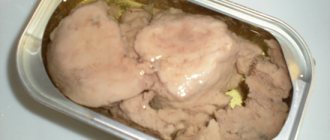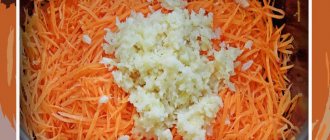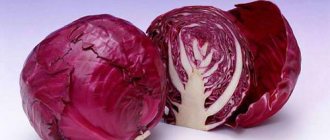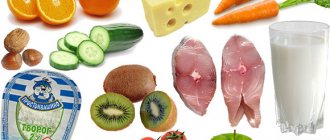Description
Asp (from the Latin Aspius aspius) is a predatory fish of the Karpov family, has a second name - sheresper. It lives in almost all large and medium-sized rivers of the Black, Caspian, Baltic and Azov seas. In Central Asia it is found in the Amu Darya and Syr Darya rivers. This is an exclusively river fish, avoiding stagnant oxbow lakes and lakes. The red-lipped and Aral asp live in the basins of the Caspian and Aral seas. There is another species - the pike asp (bald fish) - which has now become very rare and is listed in the Red Book. The asp has a spindle-shaped elongated body with a large mouth and a lower jaw protruding upward. The color of the fish is silvery with a dark bluish back and white belly. The caudal and upper fins are gray with a black border, and the lower and lateral fins are reddish. This is a large fish, with a size of 45-50 cm it can reach 2-3 kg. Sometimes there are huge individuals weighing 10-12 kg and up to 70-80 cm in length.
Juvenile asps feed on insects, worms, and small crustaceans. But growing to 30-40 cm, the asp turns into a predator, starting to hunt for fry and at the same time continuing to eat beetles and butterflies. The fish has no teeth, so it first stuns its prey with a blow from its powerful wide tail, and then picks it up and eats it. In this regard, during feeding, the asp makes a lot of noise and splashes, while small ripples can be observed on the surface of the water. Asp, as a rule, stays alone. However, in the summer, when it actively feeds, it is capable of flocking into large schools and attacking juvenile bream and roach. Reaches sexual maturity at 4-5 years. Spawning begins in late April - early May. Fish rise into rivers and lay eggs in sandy, silty or rocky soil. After spawning, individuals weaken and get sick, so they hide in places with medium depth, where the current is moderate or completely absent.
The asp is the most cautious, timid and, at the same time, violent predator, which is why in Europe it is a favorite object of sport spinning fishing. The rapid growth of individuals and tasty meat make the asp a valuable fish, however, in fishing, the annual catch of this species is no more than 0.1% of the total catch. The main reason for the low number of asp is considered to be the catch of a large number of young, immature individuals along with juveniles of low-value fish species. Asp meat is tasty, tender, quite fatty, but it has a significant drawback - excessive bonyness. To get rid of small bones, asp meat should be dried or smoked - the salt will soften the small bones and they will not be noticeable when eaten. The culinary merits of this fish are very successfully manifested in its salted form. Balyk made from asp melts in your mouth and is in no way inferior to balyk made from salmon fish.
Composition, calorie content and beneficial properties of asp
Delicious asp meat is rich in vitamins C, PP, A, B1. It contains macroelements - phosphorus, calcium, sodium, magnesium, potassium and microelements - molybdenum, fluorine, nickel, iron, chromium. The calorie content of fish per 100 g of pure product is 98.6 kcal.
What are the benefits of vitamin C? Firstly, it is one of the most powerful antioxidants, a necessary element in the synthesis of adrenaline and hormones. Secondly, it regulates capillary permeability and is responsible for blood clotting. In addition, vitamin C (ascorbic acid) reduces allergic reactions and has an anti-inflammatory effect, strengthens the body's resistance to various infections. It helps improve the absorption of calcium and iron in the body, while removing toxic mercury and lead. Without ascorbic acid, a person is unprotected and weak.
Vitamin PP has a positive effect on the nervous system, participates in the redox processes of the body, enhances and improves blood flow in capillaries and small vessels, takes part in the synthesis of hormones and promotes the removal of toxic substances from the body.
Vitamin A (retinol) affects vision, skin condition and metabolism. It is very important for every cell, as it is involved in many vital processes. With a lack of retinol in the body, night blindness develops (loss of vision at dusk), dryness of the conjunctiva of the eye appears, and the mucous membranes of the eye epithelium grow.
Vitamin B1 (thiamine) is necessary for heavy mental and physical stress, psycho-emotional stress, tachycardia, edema, shortness of breath, loss of appetite, and atonic constipation. Long-term non-healing of wounds and cuts, burns and ulcers indicates a lack of this vitamin. The best protection against mental overload and fatigue is maintaining the required amount of thiamine in the body.
Phosphorus and calcium are necessary for the proper formation of the skeleton and maintaining a healthy musculoskeletal system. Potassium is necessary for the functioning of the heart muscle and muscle contraction. Sodium activates digestive enzymes and promotes fluid accumulation in the body. Magnesium is an excellent remedy against stress, as well as for normalizing muscle activity. It inhibits the growth of malignant tumors, stimulates bile secretion and intestinal motility.
Contraindications
Individual intolerance to seafood or allergic reactions to fish.
A widespread freshwater large fish used in cooking is asp. Not everyone understands the high nutritional value of this fish and considers it “dirty”, because it lives in a mule. But it’s worth learning more about non-game fish.
What does asp fish look like?
Asp fish is one of the most common fatty fish varieties from the asp genus and the carp family (order - cypriniformes). At different points of sale it is also called cherry, beleznaya, zherikh, belesti, sheresper or pike-shaped balder (however, the latter separate species is listed in the Red Book and therefore incorrectly belongs to the general freshwater category of asp).
In addition, the asp is considered a “serious” large fish, the length of which can be from 50 centimeters, and the weight is at least 3 kilograms. In some cases, fish up to 120 centimeters long and weighing about 12 kilograms have been recorded.
In appearance, the fish is characterized by:
- Fusiform body of elongated type;
- Dark gray-blue back;
- Silver-gray sides;
- White belly;
- The presence of gray dorsal and caudal fins with darkish tips (although most often they are simply edged with a black border);
- Long lower tail;
- Red color of fins at their base;
- Gray tips of all fins;
- Slightly elongated head shape;
- Lower jaw slightly protruding upward;
- Toothless mouth.
Usually the fish is solitary, but upon reaching puberty in the fifth year of life, it often gathers in small schools. The maximum age of an asp is 15 years of life. The main spawning period is considered to be the end of April and the beginning of May.
In this case, eggs are laid by females only in sandy-silty or rocky soil. True, at this time the fish becomes especially cautious and timid, weakens greatly, which is why it hides in deep places with a complete absence of current.
Where is the asp fish found?
Often, fish live in almost all large rivers that flow into the Black and Caspian Seas. But in the rivers of the Baltic and Azov seas this fish is more difficult to find. In Central Asia it can be found in the Syr Darya and Amu Darya rivers.
On European territory it is found in some rivers of Estonia, Lithuania, Germany, the Czech Republic, Poland, Bulgaria, Romania, Norway, Sweden, and Finland. It is believed to have reached Switzerland through the Rhine-Main-Danube Canal and further to Serbia, Croatia, Austria, Hungary and Slovakia.
Although the asp prefers freshwater rivers with slow currents, it can sometimes be found in lakes and reservoirs. Thus, one of the asp species was once introduced into the lakes near Baghdad for commercial fishing. In these reservoirs, fish lead a slightly different lifestyle than in rivers and live in schools.
Sterlet ear (second recipe)
Products.
- Sterlet – 500 g
- Chicken – 1 piece
- Onions – 1 pc.
- Carrots – 1 pc.
- Bay leaf, parsley, cilantro - to taste
Preparation.
Cut the chicken, put it in a saucepan and add cold water, put it on the fire. After boiling, remove the foam, reduce the heat and add the onion, carrots, cut into large pieces, bay leaf and a bunch of cilantro and parsley, as well as parsley and celery root. Add spices: black peppercorns, allspice, 1 clove and salt. Cook all this for 30 minutes, skimming off the foam. Then remove the chicken and put it away. Wrap the small fish in cheesecloth and cook for 15 minutes. Remove everything from the broth, strain it and continue cooking according to the first recipe.
What are the benefits of asp fish?
Asp is famous for its tasty and tender meat that melts in your mouth. But many consider it a high-calorie food that is prohibited for consumption during weight loss diets.
But this opinion is not entirely correct, because the meat of this fish contains:
- Protein fractions (proteins);
- Fats (no more than 3 g);
- Water;
- Ash products;
- A number of B vitamins (nicotinic acid, thiamine, riboflavin);
- Retinol (vitamin A);
- Provitamin A, or beta-carotene;
- Minerals represented by molybdenum, nickel, chromium, fluorine, chlorine, iron, potassium, phosphorus, magnesium, sodium, calcium.
The total calorie content of a fish product is about 99 kilocalories (even less than some vegetables).
The meat of this fish is not only tasty, but also healthy. Compared to other types of fish, it contains about 1 mg of vitamin C, one of nature's best antioxidants. That's quite a lot for a fish.
In addition, vitamin C has a positive effect on hormone synthesis, blood clotting and has an anti-inflammatory and antibacterial effect. Ascorbic acid reduces the risk of an allergic reaction, increases the body's resistance to adverse factors, and also promotes the rapid elimination of toxins.
Another vitamin found in fish meat is vitamin A. This vitamin helps regulate metabolism, has a positive effect on visual receptors and improves the condition of human skin.
Fish meat also contains vitamin PP or nicotinic acid. This vitamin is involved in oxidation and reduction reactions, hormone synthesis, improves blood circulation and helps get rid of toxins in the body.
Vitamin B1 is essential for the healing of wounds and burns. In addition, the body needs it during severe stress, tachycardia and shortness of breath.
As already noted, fish meat is low in calories and contains many vitamins and minerals, so it can be considered for dietary nutrition.
Contraindications
Sterlet is not recommended for consumption by people with diseases of the pancreas and adrenal glands, as the fish contains a large amount of fatty acids.
You should always eat fresh fish, as sterlet that has been lying around for a long time can harbor helminths. Rotten sterlet is a source of botulism.
If sterlet is treated with chemical smoke, it causes serious harm to the human body.
Also, this salted fish is contraindicated for people with hypertension, as it increases blood pressure.
What to cook from asp fish
First of all, it should be noted that asp meat, although it is an exceptional protein food product, has a high fat content. In addition, it contains a large number of small bones, like any other river fish.
That is why most culinary experts recommend smoking and salting such fish. The fact is that salt softens the bones and they become almost invisible during eating.
Ukha would also be a good cooking option. After all, it is the rich fish broth that can additionally become the basis for aspic, and the taste will not be inferior to dishes prepared from salmon.
And, of course, it is customary to bake asp meat on coals as a whole carcass with fresh herbs or in the oven (preferably in foil), after washing it, peeling it from scales and cutting it into medium-sized pieces.
Cutlets are prepared from the meat of this fish, especially from large carcasses.
Use in cooking
Asp is rightfully considered one of the most delicious European river fish. If there are fishermen in the family, there are no questions about the choice of fish. If you have to purchase fish at the market or in a store, you should pay attention to the following basic parameters:
- The gills of fresh fish are always red;
- the eyes have no clouding;
- scales fit tightly to the skin;
- the skin does not separate from the meat;
- the carcass must be elastic, without dents or damage;
- No foreign odor is allowed.
As already noted, the taste of asp meat is somewhat spoiled by the presence of a large number of small bones, which, by the way, is a distinctive feature of all cyprinids, which are so necessary for these river fish for the normal functioning of the muscles and the entire musculoskeletal system. The long history of culinary use of carp, a typical fish for the rivers and lakes of the European subcontinent, has developed a number of techniques for mitigating this defect. One of these methods was salting. Thus, small bones soften under the influence of salt and become almost invisible when eating fish. Subsequent drying or smoking also reduces the hardness of the bones, making it possible to fully enjoy the taste of the fish. These are the most traditional ways of preparing asp as a product.
Numerous reviews from experts equate asp balyk to a similar dish prepared from salmon or whitefish meat. To reduce the presence of bones, minced meat is often made from the meat of this carp representative, which is then used to prepare cutlets, of which there are several versions. For example, cutlets made from pure asp meat or with the addition of pork or lard. These cutlets can be fried in oil or steamed. They are served with various side dishes. The most preferred are mashed potatoes, boiled rice or buckwheat.
Widely known as a separate or combined dish - fried asp. The recipe for its preparation is simple and accessible. It looks like this:
- cut and washed fish are cut into pieces approximately 5 cm thick;
- roll in flour or breadcrumbs with salt and seasonings, fry in a frying pan with the addition of vegetable oil;
- You need to fry the fish for about 20 minutes - 10 minutes on each side.
The asp baked in foil is quite good. To prepare it, you will need a small specimen of fish or a large fish cut into pieces; fillet is perfect. The cooking process includes the following steps:
- the fish is rubbed with a mixture of salt, sugar and pepper, wrapped in two or three layers of aluminum foil;
- The fish laid out on a baking sheet is placed in the oven for 20 minutes, while the optimal cooking temperature should be 180°C.
Since ancient times, fish has also been used to prepare complex fish soup, although a simple fish soup can be made from asp alone. Boiled asp can be a good, tasty and nutritious dish. Asp is also baked in sour cream sauce. You should adhere to the following sequence of actions:
- the fish fillet must be rolled in flour with salt and pepper and fried in a frying pan;
- then, in a deep frying pan or other container, the fish is placed in the oven, after being filled with a mixture of eggs, sour cream and onions;
- Bake for about 10 minutes.
Asp is stewed with vegetables (zucchini, tomatoes, onions, garlic) and cheese. To give a richer taste and aroma, various spices are added to the dish. In spring and early summer, caviar can be found in asp carcasses; it is salted or fried. Caviar will help diversify the table as a delicious snack or be used to make sandwiches.
To learn how to prepare balyk from asp, watch the following video.
Contraindications and harm
The main and main contraindications to eating asp dishes still remain:
- Individual intolerance to fish products;
- The occurrence of allergic reactions to fish.
However, due to the freshwater nature of the asp, helminth infection remains a dangerous factor. Therefore, it is not recommended to purchase the product “from hand”, but to take a proven (regarding the certificate information) fish product. How to cook balyk from asp in the Fishing School video
The meat of this fish is valued for its excellent taste and beneficial properties. It contains a lot of vitamins and useful elements, enough fat, but few calories, which makes the product very attractive for the diet.
Benefits and harms
Asp, like many representatives of carp species, enjoys well-deserved fame among culinary specialists. Its meat has a high taste and is also very healthy. Due to its low calorie content and relatively high protein content, dishes made from this fish will certainly be of interest to lovers of protein diets, as well as people watching their weight. Eating this product helps reduce fatigue, improve the condition of the skin and hair, and affects the composition of the blood. People who eat carp meat are able to successfully withstand stress. A balanced composition of vitamins turns asp meat into a natural antidepressant and antioxidant, helping to reduce allergic reactions.
We suggest you read How to clean pink salmon caviar at home
The consumption of carp meat products is contraindicated in case of individual intolerance caused by a genetic predisposition to insufficient synthesis of certain digestive hormones or reduced secretion of certain enzymes. It is impossible to cure these anomalies; therefore, in such rare cases, you will have to stop eating fish dishes.
History and geography of the product
Asp ( otherwise known as shelesper
) is a freshwater species of predatory fish of the carp family. Individuals live in reservoirs of Estonia, Norway, Germany, Finland, Czech Republic, Sweden, Poland, Russia, Romania, Switzerland, the Netherlands, Slovenia, and Belgium. From Switzerland they migrate along the Rhine-Main-Danube route to Croatia, Austria, Hungary and Slovakia. Asp inhabits estuaries, lower reaches of rivers and lakes. In spring, April-June, it migrates to spawning grounds. The fish unites in small schools and prefers surface waters. It is protected by the Berne Convention as an endangered species and is included in the IUCN Red List.
The history of asp in cooking is unknown. Today, fish is considered a secondary fishery item. The share of its catch averages about 1-10%. Recently, the number of individuals has decreased significantly due to pollution of water bodies and other conditions unfavorable for the habitat of this species. An urgent need is asp breeding.
Fishing today is mainly carried out by amateur fishermen. They catch it on rapids, as well as open areas of rivers. Individuals do not like standing water. The fish reveals its presence in the river by splashing when it actively pursues prey.
The best season for trolling specimens in Europe begins in August and mid-September, i.e. towards the end of summer, while in Finland it occurs throughout the summer and begins at the end of June. Asp is common in reservoirs flowing into the Caspian and Black Seas; it is rarely found in rivers of the Baltic and Azov basins. In Central Asia it is caught in the Syr Darya, Amu Darya and Lake Balkhash. To catch fish, use a spinning rod or a bottom fishing rod.
Types and varieties
Commercial fish can be 10-80 cm long, weigh on average 2-4 kg, grow to a maximum of 120 cm and gain weight up to 12 kg.
Individuals of this species have a dark bluish-gray color, a white belly and silvery sides. The asp is similar in body shape and color to the bleak, however, it is significantly larger in size. In stores, asp is sold fresh frozen in briquettes and uncut by weight. On the shelves you can find dried asp and cold smoked fish. The product is distinguished by the type of packaging, manufacturers, size range ( weight
), place of fishing, shelf life, organoleptic characteristics, type of processing and other characteristics.
When choosing fish on the counter, give preference to specimens with red gills without mucus, clear eyes, scales and skin that fit tightly to the body. Good elastic asp meat should restore its shape when pressed on the body. High-quality fish does not have stains, damage, bruises, rust or other defects.
Beneficial features
The energy value of asp is 98.6 kcal/100 g. The product is a source of vitamins ( PP, C, B2, B1, A, B3
), minerals (
phosphorus, chlorine, iron, chromium, fluorine, nickel, calcium, sodium, magnesium
) and other elements necessary for normal human well-being. Fish contains vitamin B1, which stimulates physical and mental activity and promotes wound healing.
When fish is included in a regular diet, the body is saturated with useful substances that improve its protective functions. Asp contains a lot of calcium and phosphorus. Minerals are involved in the formation and maintenance of bone tissue in normal condition, affect the appearance of nails and hair, are sources of energy, and stimulate the normal functioning of the musculoskeletal system.
The product contains potassium, the use of which has a beneficial effect on the functioning of the coronary system. In addition, fish is low in calories, so it is quite suitable for combating excess weight.
Asp contains ascorbic acid. It is considered a strong antioxidant that improves blood, reduces allergic reactions, improves immunity, and also has anti-inflammatory and antibacterial properties. Fish also contains vitamin PP, which has a beneficial effect on the activity of the nervous system and is involved in the removal of toxins from the body.
Calorie content of fresh sturgeon
Sturgeon is a freshwater and migratory fish, growing up to 3 meters in length, and individuals weighing about 200 kg have been caught. Previously, the rich patricians of Rome ate sturgeon from golden dishes decorated with fresh flowers. In China, only members of the imperial family had the right to feast on sturgeon.
Sturgeon is the leader in sodium content, but this is not all of its achievements. Fish contains fats and easily digestible proteins necessary for the body. The protein is completely complete, it contains the entire set of amino acids, and therefore it can be absorbed by the body by 98%.
Sturgeon belongs to the sturgeon family. In general, this fish is very, very nutritious. It contains large quantities of sodium, calcium, magnesium, phosphorus, iron, potassium and other elements. In addition, sturgeon contains vitamins B1, B2, C, PP.
The calorie content of fresh sturgeon is 163 kcal. The composition also included proteins - 16.4 g, fats - 10.9 g.
Sturgeon reduces cholesterol in the blood due to healthy fatty acids. When included in the diet, sturgeon reduces the risk of myocardial infarction.
However, you should not abuse this fish if you have diabetes, obesity, and, of course, if you have individual intolerance.
Use in cooking
Asp is convenient for preparing a variety of dishes, because it tolerates various types of heat treatment ( baking, boiling, stewing, frying, etc.
).
It can also be salted, dried, dried and smoked. Fish is often used to create a variety of hot and cold dishes, in particular: rich broths, aspic, snacks, etc. How to cook asp?
Fry on a grill with spices. Stew in a saucepan with apples. Fry in butter, pour in egg, sprinkle with cheese. Salt with spices. Cook in wine with vegetables. Bake in a slow cooker with mayonnaise. Boil fish soup with potatoes and herbs. Simmer in a saucepan with mushrooms and white sauce. Smoke, rub with salt and sugar. Bake in foil with sour cream and egg. Simmer in tomato sauce with onions. What ingredients does asp go with?
Vegetables/Roots: tomatoes, cucumbers, celery, sweet peppers, potatoes, zucchini. Cereals: rice, buckwheat. Fruits/Berries: lemon, apples, olives, black olives. Greens: leek, parsley, dill. Sauces: mayonnaise. Spices/Condiments: salt, pepper, garlic. Oil: vegetable, butter. Flour products: wheat and corn flour. Alcohol: white wine. Dairy products: sour cream, milk, cheese, kefir. Chicken egg. Mushrooms: champignons, oyster mushrooms. Seafood: crabs.
Due to the fact that asp meat is classified as fatty, its optimal processing method is frying, smoking or baking.
CHEMICAL COMPOSITION AND NUTRITIONAL ANALYSIS
Nutritional value and chemical composition of “Zherekh”.
The table shows the nutritional content (calories, proteins, fats, carbohydrates, vitamins and minerals) per 100 grams of edible portion.
| Nutrient | Quantity | Norm** | % of the norm in 100 g | % of the norm in 100 kcal | 100% normal |
| Calorie content | 99 kcal | 1684 kcal | 5.9% | 6% | 1701 g |
| Squirrels | 18.8 g | 76 g | 24.7% | 24.9% | 404 g |
| Fats | 2.6 g | 60 g | 4.3% | 4.3% | 2308 g |
| Water | 77.5 g | 2400 g | 3.2% | 3.2% | 3097 g |
| Ash | 1.1 g | ~ | |||
| Vitamins | |||||
| Vitamin A, RE | 20 mcg | 900 mcg | 2.2% | 2.2% | 4500 g |
| Retinol | 0.009 mg | ~ | |||
| beta carotene | 0.01 mg | 5 mg | 0.2% | 0.2% | 50000 g |
| Vitamin B1, thiamine | 0.02 mg | 1.5 mg | 1.3% | 1.3% | 7500 g |
| Vitamin B2, riboflavin | 0.06 mg | 1.8 mg | 3.3% | 3.3% | 3000 g |
| Vitamin B4, choline | 65 mg | 500 mg | 13% | 13.1% | 769 g |
| Vitamin B5, pantothenic | 0.75 mg | 5 mg | 15% | 15.2% | 667 g |
| Vitamin B6, pyridoxine | 0.19 mg | 2 mg | 9.5% | 9.6% | 1053 g |
| Vitamin B9, folates | 15 mcg | 400 mcg | 3.8% | 3.8% | 2667 g |
| Vitamin B12, cobalamin | 1.53 mcg | 3 mcg | 51% | 51.5% | 196 g |
| Vitamin C, ascorbic acid | 1 mg | 90 mg | 1.1% | 1.1% | 9000 g |
| Vitamin D, calciferol | 24.7 mcg | 10 mcg | 247% | 249.5% | 40 g |
| Vitamin E, alpha tocopherol, TE | 0.63 mg | 15 mg | 4.2% | 4.2% | 2381 g |
| Vitamin K, phylloquinone | 0.1 mcg | 120 mcg | 0.1% | 0.1% | 120000 g |
| Vitamin RR, NE | 1 mg | 20 mg | 5% | 5.1% | 2000 g |
| Macronutrients | |||||
| Potassium, K | 265 mg | 2500 mg | 10.6% | 10.7% | 943 g |
| Calcium, Ca | 30 mg | 1000 mg | 3% | 3% | 3333 g |
| Magnesium, Mg | 35 mg | 400 mg | 8.8% | 8.9% | 1143 g |
| Sodium, Na | 100 mg | 1300 mg | 7.7% | 7.8% | 1300 g |
| Sera, S | 178.3 mg | 1000 mg | 17.8% | 18% | 561 g |
| Phosphorus, Ph | 220 mg | 800 mg | 27.5% | 27.8% | 364 g |
| Microelements | |||||
| Iron, Fe | 0.63 mg | 18 mg | 3.5% | 3.5% | 2857 g |
| Manganese, Mn | 0.042 mg | 2 mg | 2.1% | 2.1% | 4762 g |
| Copper, Cu | 57 mcg | 1000 mcg | 5.7% | 5.8% | 1754 g |
| Selenium, Se | 12.6 mcg | 55 mcg | 22.9% | 23.1% | 437 g |
| Zinc, Zn | 1.48 mg | 12 mg | 12.3% | 12.4% | 811 g |
| Sterols (sterols) | |||||
| Cholesterol | 66 mg | max 300 mg | |||
| Saturated fatty acids | |||||
| Saturated fatty acids | 1.083 g | max 18.7 g | |||
| Polyunsaturated fatty acids | |||||
| Omega-3 fatty acids | 0.704 g | from 0.9 to 3.7 g | 78.2% | 79% | |
| Omega-6 fatty acids | 0.669 g | from 4.7 to 16.8 g | 14.2% | 14.3% |
The energy value of Zherekh is 99 kcal.
Main source: Skurikhin I.M. and others. Chemical composition of food products. .
** This table shows the average levels of vitamins and minerals for an adult. If you want to know the norms taking into account your gender, age and other factors, then use the My Healthy Diet app.
Sterlet ear: recipe and preparation
Products:
- Sterlet – 500 g
- Small fish – 1 kg (ruff, crucian carp, perch, rudd)
- Onions – 1 pc.
- Carrots – 2 pcs.
- Parsley and celery root - 1 piece each
- Bay bay, salt, herbs and pepper in a pot - to taste
- Potatoes – 4 pcs.
- Rice – 4 tbsp.
Preparation.
Chop the carrots, parsley and celery, pour in 3 liters of cold water, add an unpeeled onion and small fish, and put on fire. After boiling, skim off the foam, add bay leaf and pepper, cook until the fish is completely cooked. Strain the broth, put it on fire, add chopped potatoes and rice. Boil over low heat for 15 minutes. While the potatoes are cooking, cut the sterlet into portions and place in a saucepan. Then add salt, garlic, pepper and herbs. Boil for another 10 minutes, then cover the pan with a towel and cool slowly.











